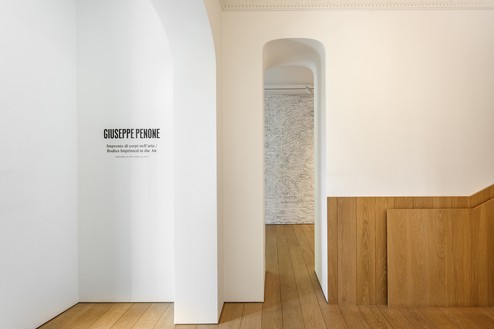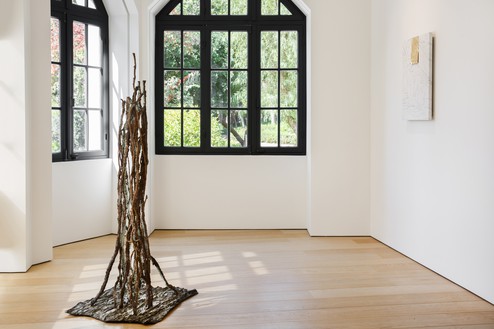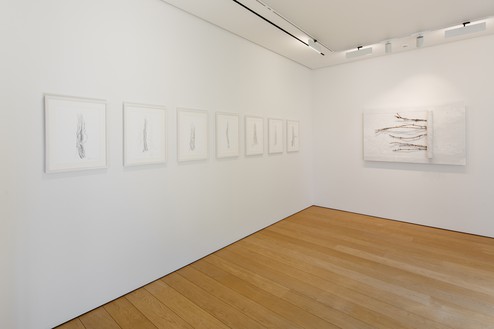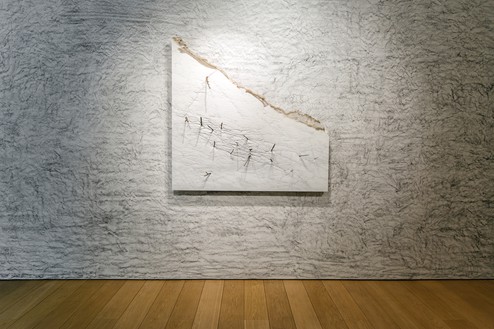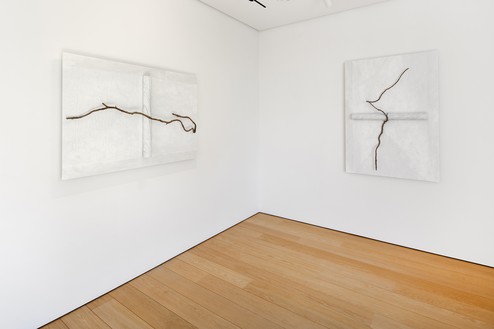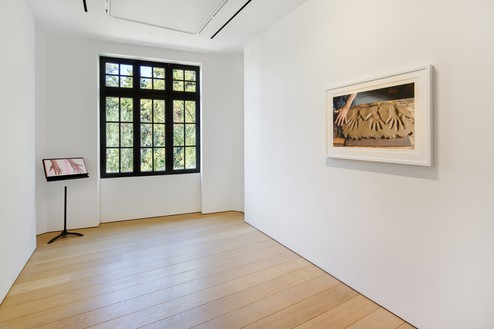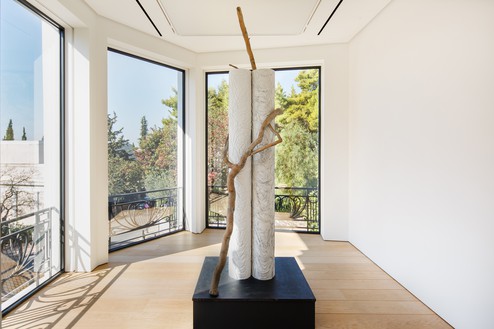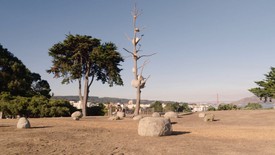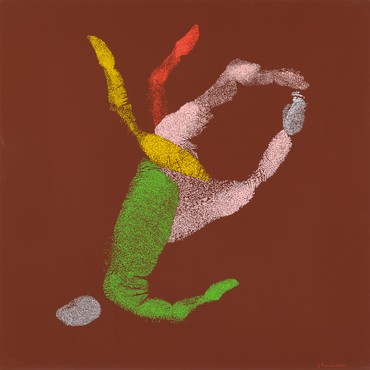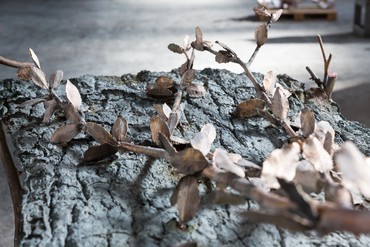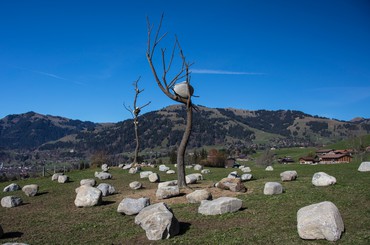Extended through November 27, 2021
About
When you work with any material, the material is leading. It is the artist’s mission to coax out the vitality and show it. I want to make you understand what creation is, the chain of thoughts and actions.
—Giuseppe Penone
Gagosian is pleased to present Impronte di corpi nell’aria / Bodies Imprinted in the Air, an exhibition of works by Giuseppe Penone made between the early 1970s and 2021.
In an oeuvre spanning more than fifty years, Penone has continually expanded the parameters of art through a close examination of the interplay between the human body and nature. Since the beginning of his career in the late 1960s, as a proponent of the Arte Povera movement, he has employed and juxtaposed materials both ancient and modern, “raw” and manufactured—including bronze, leather, wood, stone, and acacia thorns. The exhibition’s title comes from a series of new sculptures in bronze and marble that evoke the growth of plant life out of stone, as though from earth.
Penone’s early work is marked by an elemental simplicity. Investigating primary materials in his immediate surroundings, he often staged interventions in the forests around his Piedmont hometown. Arte Povera, distinguished by the use of “poor” and unconventional materials such as plant and vegetable matter, questioned cultural assumptions through the evocation of a preindustrial age. In critiquing the dehumanizing effects of mechanization, the movement countered other art genres, both earlier and contemporaneous, such as Surrealism, Pop, and Minimalism.
Όταν δουλεύεις με οποιοδήποτε υλικό, το υλικό είναι αυτό που σε καθοδηγεί. Αποστολή του καλλιτέχνη είναι να εξωθήσει και να αναδείξει τη ζωτικότητά του. Σκοπός μου είναι να σας κάνω να κατανοήσετε τι εστί δημιουργία, ποια είναι η αλληλουχία σκέψεων και πράξεων.
—Giuseppe Penone
Η Gagosian βρίσκεται στην ευχάριστη θέση να παρουσιάσει την έκθεση Impronte di corpi nell’aria / Bodies Imprinted in the Air, με έργα του Giuseppe Penone που δημιούργησε από τη δεκαετία του 1970 έως και το 2021.
Μέσα από μία καλλιτεχνική πορεία που εκτείνεται σε περισσότερες από πέντε δεκαετίες, ο Penone επεκτείνει συνεχώς τις παραμέτρους της τέχνης μέσω της ενδελεχούς εξέτασης της αλληλεπίδρασης μεταξύ του ανθρώπινου σώματος και της φύσης. Από την αρχή της καριέρας του στα τέλη της δεκαετίας του 1960, ως εκφραστής του κινήματος της Arte Povera, έχει χρησιμοποιήσει και αντιπαραβάλλει υλικά τόσο αρχαία όσο και σύγχρονα, «ακατέργαστα» και τεχνητά - όπως μπρούτζο, δέρμα, ξύλο, πέτρα και αγκάθια ακακίας. Η έκθεση πήρε τον τίτλο της από μια σειρά νέων γλυπτικών έργων σε μπρούτζο και μάρμαρο που παραπέμπουν στην ανάπτυξη φυτών τα οποία φυτρώνουν μέσα από την πέτρα, σαν να προέρχονται από τη γη.
Τα πρώιμα έργα του Penone χαρακτηρίζονται από μια στοιχειώδη απλότητα. Διερευνώντας πρωτογενή υλικά στο άμεσο περιβάλλον του, δημιουργούσε συχνά εικαστικές παρεμβάσεις στα δάση γύρω από την ιδιαίτερη πατρίδα του στο Πιεμόντε. Η Arte Povera, η οποία διακρίνεται από τη χρήση «φτωχών» και αντισυμβατικών υλικών, όπως οι φυτικές ύλες, αμφισβήτησε τις πολιτισμικές παραδοχές αναπολώντας μια προβιομηχανική εποχή. Το κίνημα κατέκρινε τις απανθρωποποιητικές συνέπειες της εκβιομηχάνισης και αντιπαρατέθηκε με άλλα είδη τέχνης, τόσο παλαιότερα όσο και σύγχρονα, όπως ο Σουρεαλισμός, η Αμερικανική Ποπ Αρτ και ο Μινιμαλισμός.
Ο Penone ενσωματώνει συχνά το σώμα και τις χειρονομίες του στο έργο του: οι φωτογραφίες Libro / polvere trappola / mano (Book / Dust Trap / Hand) (1972) και Guanti (Gloves) (1972)—τα πιο πρώιμα έργα της έκθεσης—ενσωματώνουν εικόνες του χεριού του. Αυτή η πρακτική επαναλαμβάνεται και σε πιο πρόσφατα έργα του, όπως στο Rotazione (Rotation, 2020), το οποίο απεικονίζει ένα χέρι κατά την πράξη της δημιουργίας πολλαπλών αποτυπωμάτων. Σε μεταγενέστερα έργα, ο καλλιτέχνης παραπέμπει στη μορφή του σώματός του με λιγότερο άμεσο τρόπο. Σε επιτοίχιες μαρμάρινες πλάκες, όπως στο έργο Pelle di marmo – oro (Skin of Marble – Gold, 2006), αποκαλύπτει πλέγματα που θυμίζουν φλέβες, καθιστώντας ασαφή τη διαχωριστική γραμμή μεταξύ ζωικού και ορυκτού, και δίνοντας έμφαση στις μετασχηματιστικές φυσικές διεργασίες της γέννησης και της ανάπτυξης, του θανάτου και της φθοράς.
#GiuseppePenone
Artist
Downloads
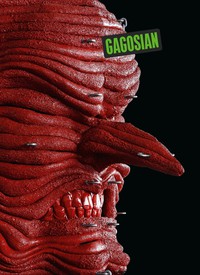
Now available
Gagosian Quarterly Fall 2022
The Fall 2022 issue of Gagosian Quarterly is now available, featuring Jordan Wolfson’s House with Face (2017) on its cover.
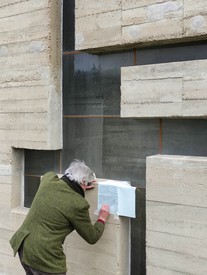
Giuseppe Penone À La Tourette
Le Couvent Sainte-Marie de La Tourette, in Éveux, France, is both an active Dominican priory and the last building designed by Le Corbusier. As a result, the priory, completed in 1961, is a center both religious and architectural, a site of spiritual significance and a magnetic draw for artists, writers, architects, and others. This fall, at the invitation of Frère Marc Chauveau, Giuseppe Penone will be exhibiting a selection of existing sculptures at La Tourette alongside new work directly inspired by the context and materials of the building. Here, Penone and Frère Chauveau discuss the power and peculiarities of the space, as well as the artwork that will be exhibited there.
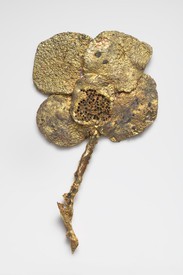
Augurs of Spring
As spring approaches in the Northern Hemisphere, Sydney Stutterheim reflects on the iconography and symbolism of the season in art both past and present.

Giuseppe Penone: By the Bay
Elizabeth Mangini writes on Giuseppe Penone’s installation of two sculptures at San Francisco’s Fort Mason.
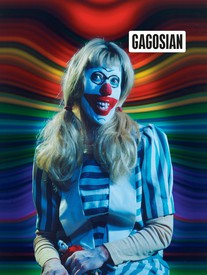
Now available
Gagosian Quarterly Spring 2020
The Spring 2020 issue of Gagosian Quarterly is now available, featuring Cindy Sherman’s Untitled #412 (2003) on its cover.
Giuseppe Penone at Fort Mason
An outdoor installation by Giuseppe Penone in San Francisco’s historic Fort Mason features two life-size bronze sculptures cast from fallen trees. The project continues the artist’s long investigation of the perpetual give-and-take between humans and nature. In this video, Penone discusses what drew him to this landscape and the concepts behind the installation.


